
Für eine deutsche Übersetzung dieser Seite einfach die Brandenburger Flagge anklicken
 |
Click the Brandenburg Flag for a German translation Für eine deutsche Übersetzung dieser Seite einfach die Brandenburger Flagge anklicken |


|
Ansbach District |
Vacation 2010September 16, Germany
Rothenburg ob der Tauber |
Rothenburg ob der Tauber |



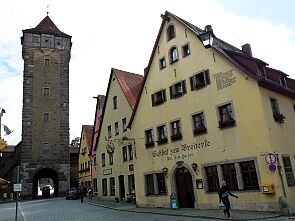 |
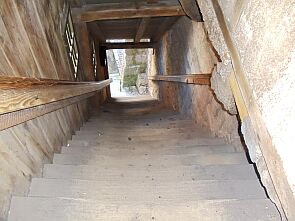 |

|
| Röder-Tower, seen from inside (left) and outside (right) the city walls. |
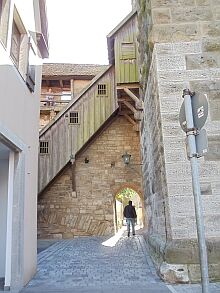 |
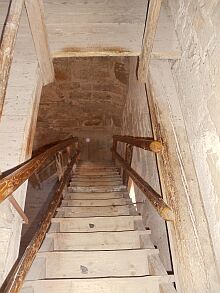 |
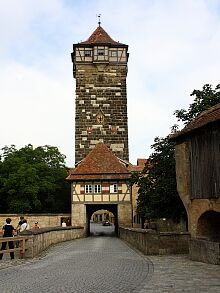 |
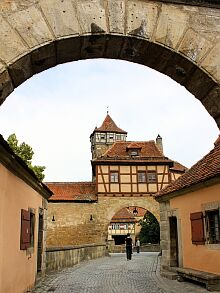
|

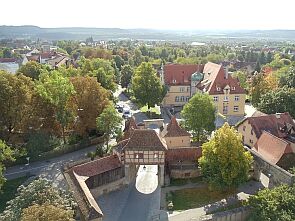 |
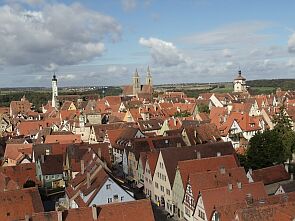 |

|
View at the Röder-Gate and over the town from the top of Röder-Tower. 
|

 |

|
| View to north and south from Röder-Tower. We took the northern route towards Gallow-Tower. |

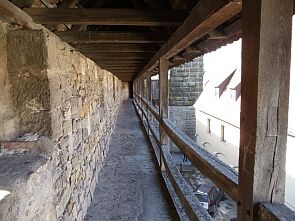 |
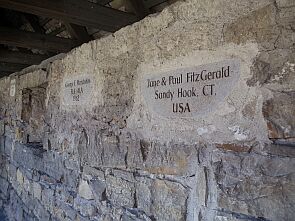 |

|
| People from all over the world take part in preserving the wall. One can actually adopt a couple of feet. |
 |
 |
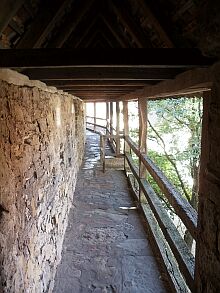
|
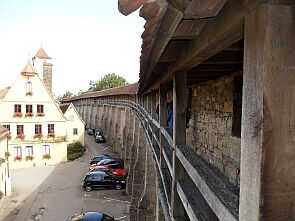 |
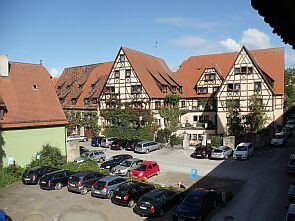 |
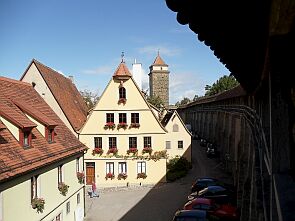
|

 |
 |
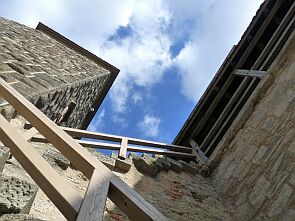
|
We left the wall at the Gallows Tower (below left). This is the town's tallest tower, built in 1388. Nearby used to be the town's galow,
symbol of the city's independent jurisdiction. We then walked to the White Tower (below right), which was built around 1172 as one of the gates to the original twelfth century wall.  The cool picture in the middle above is one of Steffen's and the picture below left is borrowed from mihalko-family.com. |
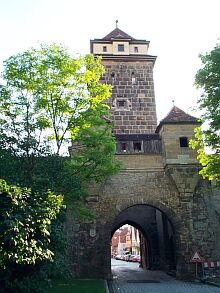 |
 |
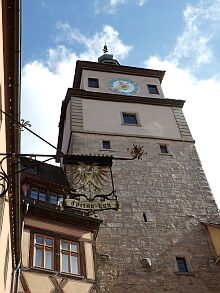 |
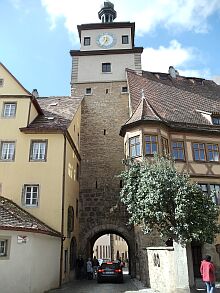
|

|
Earlier this day, we already went to the western end of town and checked out the Castle Gate. It is named after a castle that was built here in
1142 but was destroyed in an earthquake in 1356. We left the town through a small gate just south of the Castle Gate. |
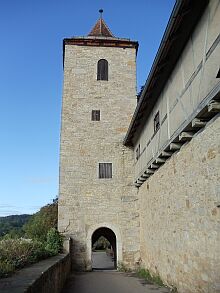 |
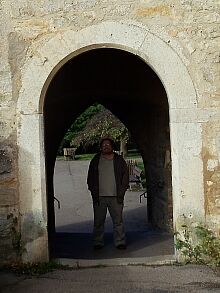 |
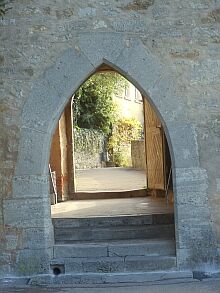 |
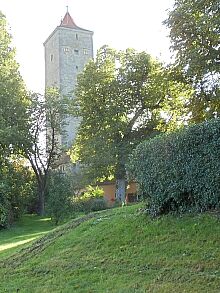
|
 |
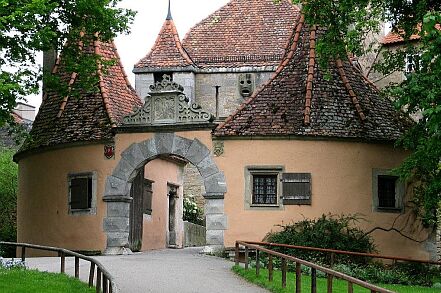 |
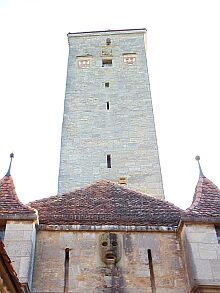
|
The Castle Gate and its tower were built between 1460 and 1470. In the middle part of the gate (above right), one can still see the rails
for the drawbridge chains and an evil looking mask through which invaders were attacked with hot tar. The pictures below show the gate from outside (left) and inside(right) the city walls. |
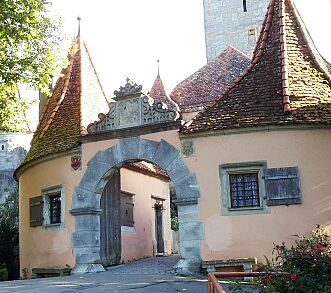 |
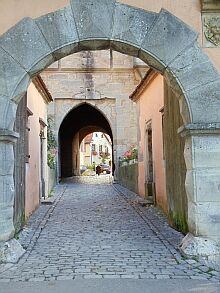 |

|
 |
The Castle Gate is also famous for its "Needle Eye." The big gate remained closed between sunset and sunrise. Whoever missed the closing time
had to crawl through a small, only four feet tall door. That way, only one person at a time was able to enter and the guards could scan for suspects. Unfortunately, we didn't have enough time to check out the entire town. The website romanticroad (in English) and the town's Tourism Service (in German), give you an idea of what we missed.  We also borrows a number of pictures from varius sources (click the links) to show you the remaining main attractions. |
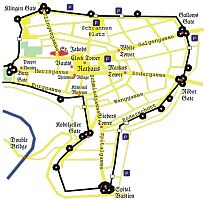
|

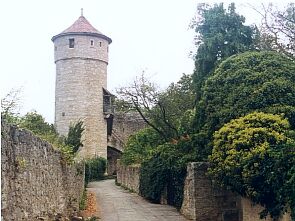 Powder Tower
Powder Tower |
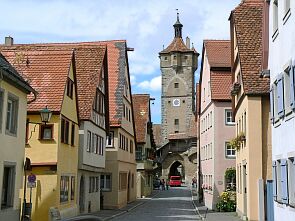 Klingen Tower
Klingen Tower |
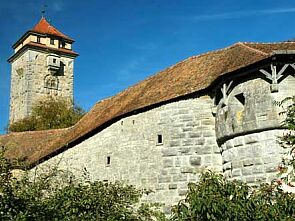 Spital Bastion
Spital Bastion
|

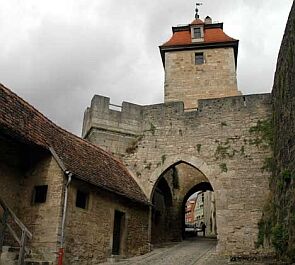 Kobolzeller Tower & Gate
Kobolzeller Tower & Gate |
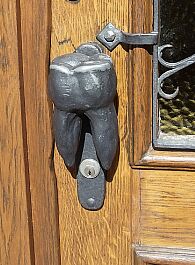 Local Dentist
Local Dentist |
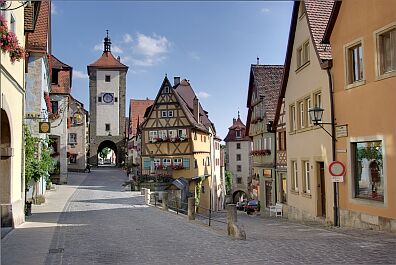 Plönlein and Siebers Tower
Plönlein and Siebers Tower
|

The Powder Tower was built in 1408 and rebuilt after the Thirty-Years War in 1531, when a careless guard blew up the tower (and himself) and
thus opened the gate for invading imperial troops. The 121 feet high Klingen Tower in the north was built between 1395 and 1400. It also serves as water tower for the towns fountains.  The Spital Bastion in the south was built around 1586; it has two inner courtyards and an adjacent moat.  Kobolzeller Gate in the west was built in 1630 and named after the village Kobolzell.  Siebers Tower was built in 1385 as part of the second fortification that was built when the city expanded. It is located in the south at the Plönlein (Little Square).
|

 |
Click the left turn sign to get back to the previous page. Or click the right turn signal to move on to Julia's home town Jena. |

|


 Back to Vacation 2010 |
 Back to English Main Page |
 Back to Start Page |